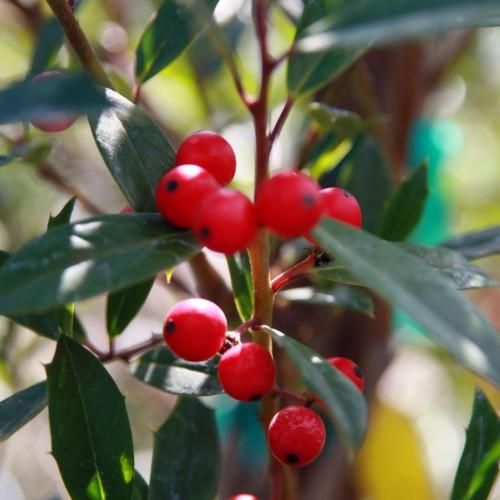
foster holly
Ilex attenuata 'Fosteri'
Cycle:
Perennial
Watering:
Average
Hardiness Zone:
6 - 9
Flowers:
Flowers
Sun:
Full sun,part shade
Fruits:
Fruits Ready In
Edible:
Yes
Leaf:
Yes
Growth Rate:
Low
Maintenance:
Moderate
Drought Tolerant:
Yes
Salt Tolerant:
Yes
Thorny:
Yes
Care Level:
Medium
watering
When it comes to watering, Foster Holly (Ilex attenuata 'Fosteri') requires about 1 inch of water per week. During the warmer months, it may require more water. Water your Foster Holly deeply once or twice a week, rather than shallowly every day, to ensure that the roots absorb enough moisture. After you water your Ilex, always check the soil with your fingers to make sure the water has reached the roots. Too much water can be just as harmful as too little, so it is important to not overwater. Additionally, be sure to water your plant early in the day so that the foliage has plenty of time to dry off before nightfall.
sunlight
Foster holly should be grown in full sun in order to receive the most sunlight for optimum growth. Depending on the season, they can tolerate a few hours of morning or afternoon sun, but ideal conditions for this species would be 4-6 hours of direct sunlight per day. During the summer months, be careful to not overexpose this species as it could cause sun-scald. In winter, Foster holly can benefit from some sun protection as the lower intensity of the sun can help keep them from drying out. When planting, make sure to site it in a protected area to help minimize possible exposure to intense temperatures.
pruning
Foster holly should be pruned in the spring season after the risk of frost has passed. Pruning should be done selectively, removing dead, diseased, or damaged foliage with sharp, clean cuts made no more than 1/4 inch above a bud. Prune lightly to encourage dense branching and more compact growth. Pruning of growth can be done to restrict its size and shape as needed for the landscape. Avoid hard pruning; prune no more than 1-third of the previous season’s growth at 1 time.
